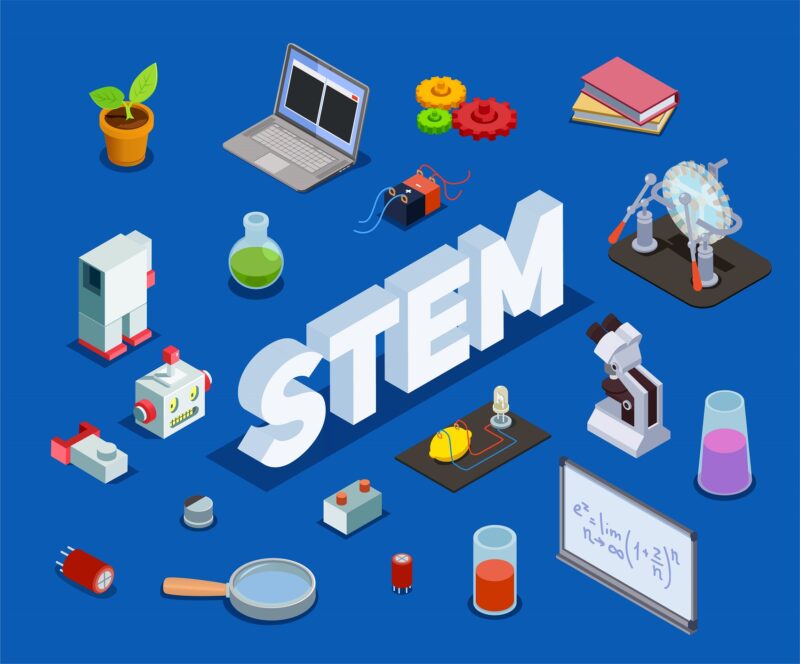In the 21st century, the role of technology in education has become a crucial part of adapting to the changing needs, particularly in STEM (Science, Technology, Engineering, and Mathematics) fields. As we delve into the digital era, STEM schools have taken center stage in preparing students for the challenges and opportunities that lie ahead. This blog explores how institutions like Deeksha in Bangalore, are integrating technology into their STEM curriculum, thus equipping students with the tools and knowledge they need to thrive in a digital world.
Incorporating Technology in STEM Education
At the heart of STEM education is the integration of technology into the learning process. STEM schools, recognizing the importance of this integration, have adopted innovative approaches to teaching and learning. The use of technology in these schools extends beyond mere computer literacy, embedding digital tools and resources across all aspects of the STEM curriculum. This approach ensures that students are not only consumers of technology but also creators, capable of leveraging digital solutions to solve complex problems.
Deeksha stands out in this regard, with a STEM curriculum that emphasizes hands-on learning experiences facilitated by technology. From coding and robotics to data analysis and digital design, students engage with technology in a variety of contexts, gaining a deep understanding of its applications in real-world scenarios. This practical engagement helps demystify technology, making it an integral part of the students’ learning journey.
Technology-Enabled Learning Environments
STEM schools have pioneered the use of technology-enabled learning environments to enhance educational outcomes. Interactive whiteboards, digital laboratories, and online learning platforms have become standard features, offering students an immersive and interactive learning experience. At Deeksha, for example, classrooms are equipped with the latest technological tools, enabling teachers to deliver lessons in more engaging and effective ways. These tech-rich environments encourage collaboration, creativity, and critical thinking, essential skills in the digital age.
Preparing for the Future
The digital world presents an array of career opportunities in STEM fields, from artificial intelligence and robotics to biotechnology and environmental science. By incorporating technology into the STEM curriculum, schools like Deeksha are preparing students for these future careers. The curriculum is designed not only to impart technical skills but also to foster adaptability, problem-solving abilities, and a lifelong love for learning. This comprehensive educational approach ensures that students are well-prepared to navigate the complexities of the digital world and make meaningful contributions to society.
Collaborations and Partnerships
Collaborations between STEM schools and technology companies, research institutions, and universities are increasingly common, enriching the STEM curriculum with real-world insights and opportunities for students. Deeksha, for instance, has established partnerships with leading organizations to provide students with internships, workshops, and project-based learning experiences. These collaborations not only enhance the curriculum but also connect students with professionals and experts in the field, offering them a glimpse into the future of STEM careers.
Embracing the Digital Future
The integration of technology in STEM education is more than a trend; it is a necessity. As we move further into the digital age, the demand for skilled professionals in STEM fields will only grow. Schools like Deeksha in Bangalore are at the forefront of this educational evolution, providing students with a robust foundation in technology and preparing them for the challenges of the digital world. Through innovative curricula, technology-enabled learning environments, and strategic partnerships, these schools are not just educating the next generation of scientists, engineers, and mathematicians; they are shaping the future leaders of our digital society. For parents considering the best educational path for their children, STEM schools offer a promising avenue, one that leads to a future where their children are not just ready for the digital world but poised to lead it.



